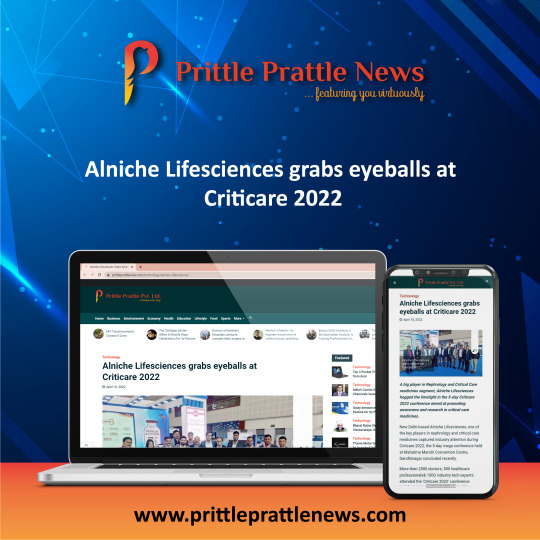#lifesciences
Text

#biology#medicalschool#biotech#science#health#biologyisawesome#biologyisfun#education#celldivision#mitosis#biologystudent#cellbiology#biology facts#lifesciences#stem#biotechnology#college prep#chemistry#maths#math#motivation
1K notes
·
View notes
Text
Sandwich compounds are special chemical compounds used as basic building blocks in organometallic chemistry. So far, their structure has always been linear. Recently, researchers of Karlsruhe Institute of Technology (KIT) and the University of Marburg were the first to make stacked sandwich complexes form a nano-sized ring. Physical and other properties of these cyclocene structures will now be further investigated. The researchers report their findings in Nature.
61 notes
·
View notes
Text

#csir#csiro#csiriano#csirnet#lifesciences#lifescience#lifescienceid#lifesciencejobs#biologymemes#biology#biologyclass#biologyteacher#biologylab#biologynotes#biologystudent#biologyjokes#science#sciences#sciencememes#sciencefacts#sciencefiction#biotech#biotechnology#biotechnologist#biotechusa#zoology#microbiology
11 notes
·
View notes
Text
Unlock the World of Data Analysis: Programming Languages for Success!
💡 When it comes to data analysis, choosing the right programming language can make all the difference. Here are some popular languages that empower professionals in this exciting field
https://www.clinicalbiostats.com/
🐍 Python: Known for its versatility, Python offers a robust ecosystem of libraries like Pandas, NumPy, and Matplotlib. It's beginner-friendly and widely used for data manipulation, visualization, and machine learning.
📈 R: Built specifically for statistical analysis, R provides an extensive collection of packages like dplyr, ggplot2, and caret. It excels in data exploration, visualization, and advanced statistical modeling.
🔢 SQL: Structured Query Language (SQL) is essential for working with databases. It allows you to extract, manipulate, and analyze large datasets efficiently, making it a go-to language for data retrieval and management.
💻 Java: Widely used in enterprise-level applications, Java offers powerful libraries like Apache Hadoop and Apache Spark for big data processing. It provides scalability and performance for complex data analysis tasks.
📊 MATLAB: Renowned for its mathematical and numerical computing capabilities, MATLAB is favored in academic and research settings. It excels in data visualization, signal processing, and algorithm development.
🔬 Julia: Known for its speed and ease of use, Julia is gaining popularity in scientific computing and data analysis. Its syntax resembles mathematical notation, making it intuitive for scientists and statisticians.
🌐 Scala: Scala, with its seamless integration with Apache Spark, is a valuable language for distributed data processing and big data analytics. It combines object-oriented and functional programming paradigms.
💪 The key is to choose a language that aligns with your specific goals and preferences. Embrace the power of programming and unleash your potential in the dynamic field of data analysis! 💻📈
#DataAnalysis#ProgrammingLanguages#Python#RStats#SQL#Java#MATLAB#JuliaLang#Scala#DataScience#BigData#CareerOpportunities#biostatistics#onlinelearning#lifesciences#epidemiology#genetics#pythonprogramming#clinicalbiostatistics#datavisualization#clinicaltrials
3 notes
·
View notes
Photo

Walk-in for Research Associate; ACTREC; save the date 4 Oct, 2022 #lifescience #lifesciences #jobalerts #cell2science #phd #phdstudent #phdjourney #lifesciencejobs #pharmacy #biotech #biochemistry #molecularbiology #india #indiascience #serb #csir #csirnetlifesciences #netlifesciences #icmr #mumbai #actrec https://www.instagram.com/p/CizdKCULBDQ/?igshid=NGJjMDIxMWI=
#lifescience#lifesciences#jobalerts#cell2science#phd#phdstudent#phdjourney#lifesciencejobs#pharmacy#biotech#biochemistry#molecularbiology#india#indiascience#serb#csir#csirnetlifesciences#netlifesciences#icmr#mumbai#actrec
2 notes
·
View notes
Photo

Alniche Lifesciences grabs eyeballs at Criticare 2022
https://www.prittleprattlenews.com/technology/alniche-lifesciences/
3 notes
·
View notes
Text
Bariatric Surgery Market – Growth Prospects in 2024-2032
The global market for bariatric surgery is expected to advance with a CAGR of 5.43% in revenue over the forecasting years 2024-2032. Request Free Sample Report
As per the triton market research, the Global Bariatric Surgery Market report is segmented by Device (Assisting Device, Implantable Device), Procedure (Gastric Sleeve Surgery, Biliopancreatic Diversion With Duodenal Switch, Adjustable Gastric Band, Gastric Bypass), End-User (Hospital, Ambulatory Surgical Center, Bariatric Surgery Clinic), and Regional Outlook (Asia-Pacific, North America, Europe, Middle East And Africa, and Latin America).
The report highlights the Market Summary, Industry Outlook, Porter’s Five Forces Analysis, Market Attractiveness Index, Regulatory Framework, Key Market Strategies, Market Drivers, Challenges, Opportunities, Competitive Landscape, Research Methodology and scope, Global Market Size, Forecasts & Analysis (2024-2032).
As per Triton’s report analysis, the global market for bariatric surgery is expected to advance with a CAGR of 5.43% in revenue over the forecasting years 2024-2032.

Bariatric surgery is a medical procedure aimed at addressing severe obesity. These surgeries modify the gastrointestinal system and induce a feeling of fullness which reduces the capacity for food intake, leading to long-term weight loss.
Advancements in surgical techniques and medical equipment have facilitated less invasive bariatric surgery procedures. Utilizing laparoscopic approaches with small incisions and miniature tools reduces the risks, trauma, and recovery periods associated with open surgery. Additionally, intragastric balloons aid in weight loss before surgery. Such improvements fuel the market growth for bariatric surgery.
Differences in insurance coverage present challenges for the bariatric surgery market. Coverage varies worldwide, with some national or private plans excluding it altogether. High out-of-pocket expenses pose a significant barrier for many individuals. This limited coverage adversely affects surgery rates and exacerbates health disparities.
The Asia-Pacific bariatric surgery market is expected to witness the fastest growth during the forecast period. Rising obesity rates and a surge in metabolic disorders throughout the region fuel this growth. Similarly, increased healthcare spending and heightened awareness of the advantages of bariatric procedures are key drivers behind the expansion of the studied market.
The prominent entities in the bariatric surgery market are Johnson & Johnson, B. Braun Melsungen AG, Apollo Endosurgery Inc, Olympus Corporation, Medtronic Plc, Intuitive Surgical Inc, AbbVie Inc, Mediflex Surgical Products, USGI Medical Inc, and CONMED Corporation.
Additionally, laparoscopic procedures are preferred as they utilize small incisions with camera assistance and miniaturized instruments. This approach has less blood loss, lower complication risks, and faster recovery of patients.
0 notes
Text

🌟 Elevate your cleanroom validation with Compleat Technical Solutions Inc! 🌟
Looking to optimize your cleanroom operations? Look no further! At Compleat Technical Solutions Inc., we provide top-notch services to ensure your cleanroom meets the highest standards.
Our expert consultants specialize in:
✅ HVAC system validation
✅ Airflow studies
✅ ISO-standard assessments
With our comprehensive expertise, we'll help you optimize your operations and ensure your cleanroom is operating at peak efficiency.
Please don't settle for less when it comes to cleanroom validation. Contact Compleat Technical Solutions Inc. Today, and let us help you achieve excellence! 💼🔬
Contact👇
🌐 Website: compleatts.com
📧 Email: [email protected]
📞 Phone: +1 (704) 453-8093
.
.
.
#Compleatts #CleanroomValidation #TechnicalSolutions #OptimizeOperations #HealthcareInnovation #LifeSciences
#staffing#staffingagency#lifesciences#itservices#techsolutions#itconsulting#itjobs#charlotte#usa#compleatts
0 notes
Link
Imagine a world where science and pop culture collide in a dazzling celebration of groundbreaking discoveries. That's the very essence of the Breakthrough Prize ceremony, an annual event that honors the brightest minds in science and mathematics. This prestigious award ceremony, often referred to as the "Oscars of Science," isn't just about recognizing brilliant scientific achievements. It's about fostering public interest in science, inspiring a new generation of scientists, and bridging the gap between the worlds of research and entertainment. Science Shines Bright at the 2024 Bridging the Gap Between Science and Pop Culture Founded in 2012 by a collective of visionary individuals – Sergey Brin (Google co-founder), Mark Zuckerberg (Facebook founder), Priscilla Chan (co-founder of the Chan Zuckerberg Initiative), Yuri & Julia Milner (technology investor & science philanthropist), and Anne Wojcicki (co-founder of 23andMe) – the Breakthrough Prize aims to elevate the profile of scientists in popular culture. By bringing together the greatest minds in science with the biggest names in Hollywood, the Breakthrough Prize ceremony creates a captivating spectacle that garners global attention. Past ceremonies have featured A-list presenters and performers like Kristen Bell, Vin Diesel, Gal Gadot, John Legend, and Lionel Richie, further amplifying the event's impact. A Glittering Celebration of Scientific Breakthroughs The 2024 Breakthrough Prize ceremony marks a significant milestone – the 10th anniversary of this prestigious event. Set to take place on April 13th at the Academy Museum of Motion Pictures in Los Angeles, the ceremony promises to be even more spectacular than ever before. Hosted by the ever-charming James Corden, the event will feature a star-studded lineup, including Robert Downey Jr., Kim Kardashian, Alicia Keys, Venus Williams, and Michelle Yeoh. This prestigious gathering will bring together not just Hollywood royalty and renowned athletes, but also a community of scientists whose discoveries shape our world. The production itself is a testament to the ceremony's grand scale. Vanity Fair and Don Mischer Productions, responsible for major events like the Oscars, Emmys, Olympic Games openings, and Super Bowl halftime shows, are teaming up to create a truly unforgettable experience. Honoring the Architects of Progress: 2024 Breakthrough Prize Laureates Every year, the Breakthrough Prize recognizes scientists who have made significant contributions to the advancement of human knowledge. The 2024 laureates represent a diverse range of scientific fields, focusing on critical areas like human biology, cancer research, and neurological diseases. This year's prestigious awards acknowledge a total of 26 scientific minds: 11 winners of the $3 million Breakthrough Prizes: These awards are distributed across life sciences, fundamental physics, and mathematics. 12 early-career physicists and mathematicians: Recognizing the exceptional talent of emerging scientists. 3 Maryam Mirzakhani New Frontiers Prizes: Dedicated to supporting the work of young women mathematicians. Life Sciences: Revolutionizing Treatments and Understanding Among the 2024 Breakthrough Prize laureates in Life Sciences are researchers who have made groundbreaking discoveries with the potential to transform healthcare. Carl H. June and Michel Sadelain revolutionized cancer treatment by harnessing the power of the immune system. Their work focuses on re-engineering T cells – immune system soldiers – to target and eliminate cancerous cells in individual patients. This pioneering approach has shown remarkable success in treating leukemias and other aggressive cancers. Demis Hassabis and John Jumper are behind the creation of AlphaFold, a revolutionary AI system that can accurately predict the structure of proteins. This breakthrough discovery has immense implications for understanding disease mechanisms and developing new medications. Thomas Gasser, Ellen Sidransky, Andrew Singleton, and Richard Youle shed light on Parkinson's Disease by pinpointing the most common genetic causes of this debilitating neurological condition. Their research offers valuable insights into the disease process and paves the way for the development of better treatments. Sabine Hadida, Paul Negulescu, and Fredrick Van Goor are being recognized for creating life-changing treatments for cystic fibrosis. Their work targets the root cause of the disease, greatly improving the lives of cystic fibrosis patients. Fundamental Physics and Mathematics: Unveiling the Universe's Secrets The Breakthrough Prize also acknowledges groundbreaking discoveries in the realms of fundamental physics and mathematics. Hidetoshi Katori and Jun Ye constructed atomic clocks with unparalleled accuracy. These incredible timekeeping devices lose less than a second in over 15 billion years, pushing the boundaries of precision measurement. John Cardy and Alexander Zamolodchikov made significant contributions to statistical physics and quantum field theory. Their work has applications in various fields, from particle physics to the study of black holes.
#2024BreakthroughPrizelaureates#AlphaFold#AnneWojcicki#atomicclocks#BreakthroughPrize#BreakthroughPrizeceremony#CarlJune#cysticfibrosis#differentialgeometry#fundamentalphysics#lifesciences#mathematics#MichelSadelain#ParkinsonsDisease#scienceandpopculture#scienceawards#ScienceShinesBrightatthe2024
0 notes
Text
Exploring the Growth Trajectory of the Bioprosthetics Market

The healthcare industry is in a perpetual state of evolution, continually seeking innovative solutions to address a myriad of health challenges. Among the fields experiencing remarkable growth and promise is the bioprosthetics market.
According to a comprehensive study by Next Move Strategy Consulting, the global Bioprosthetics Market size is projected to soar to USD 12.36 billion, with a Compound Annual Growth Rate (CAGR) of 10.85% by the year 2030. This forecasted growth underscores the significant potential and escalating demand for bioprosthetic solutions within the healthcare sector.
Request a FREE sample, here: https://www.nextmsc.com/bioprosthetics-market/request-sample
Understanding Bioprosthetics
Bioprosthetics, also referred to as biologic or tissue-engineered implants, represent a revolutionary approach to tissue repair or replacement within the human body. Unlike conventional synthetic implants, bioprosthetics are crafted from natural sources such as human or animal tissues, or synthesized using biomaterials that mimic biological structures. This natural composition imparts several advantages, including reduced risk of rejection, enhanced biocompatibility, and the potential for tissue regeneration.
Driving Forces Behind Market Growth
The trajectory of growth in the bioprosthetics market can be attributed to a convergence of key factors driving demand and adoption on a global scale. One of the primary drivers is the escalating prevalence of chronic diseases and age-related conditions, such as cardiovascular diseases, orthopedic disorders, and organ failure. Bioprosthetic implants offer promising solutions for patients in need of tissue repair or replacement, particularly in cases where traditional treatments may prove ineffective or pose risks of complications.
Furthermore, advancements in tissue engineering, regenerative medicine, and biomaterials have catalyzed innovation in bioprosthetic technologies, leading to the development of more sophisticated and customizable implants. These technological strides have expanded the scope of bioprosthetic applications across a wide spectrum of medical specialties, including cardiology, orthopedics, neurology, and urology.
Additionally, growing awareness among healthcare professionals and patients regarding the benefits of bioprosthetic implants, such as improved functional outcomes, reduced recovery times, and enhanced quality of life, has played a pivotal role in driving acceptance and adoption. Moreover, favorable regulatory frameworks and reimbursement policies in many countries have facilitated market access and commercialization of bioprosthetic products.
The Landscape of Competition and Innovation
The bioprosthetics market is witnessing dynamic growth and competition, with leading industry players investing heavily in research and development initiatives to expand their product portfolios and gain a competitive edge. Collaborations between academic institutions, research organizations, and healthcare companies are driving innovation and accelerating the translation of scientific discoveries into clinical applications.
The competition in the market is further intensified by the emergence of startups and small to medium-sized enterprises (SMEs) leveraging novel technologies and approaches to develop innovative bioprosthetic solutions. These companies are often characterized by agility, flexibility, and a focus on niche applications, enabling them to carve out a significant presence in the market alongside established industry giants.
Challenges and Opportunities on the Horizon
Looking ahead, the future of the bioprosthetics market holds immense promise, with continued advancements in technology, increasing investments in research and development, and growing acceptance of regenerative medicine approaches. However, the market also faces several challenges that necessitate careful consideration and strategic planning by industry stakeholders.
One such challenge is regulatory compliance, as bioprosthetic products are subject to rigorous regulatory scrutiny to ensure safety, efficacy, and quality standards. Navigating the complex landscape of regulatory requirements across different regions and jurisdictions requires meticulous planning and expertise to streamline the approval process and expedite market entry.
Additionally, scalability of production and cost-effectiveness are critical considerations in the commercialization of bioprosthetic products. Achieving economies of scale while maintaining product quality and consistency presents a significant challenge for manufacturers, particularly in the context of complex bioprocesses and specialized manufacturing facilities.
Despite these challenges, the bioprosthetics market presents abundant opportunities for growth and innovation. The ongoing convergence of interdisciplinary fields such as biotechnology, materials science, and digital health is fueling the development of next-generation bioprosthetic solutions with enhanced functionalities and therapeutic capabilities.
Ethical and Societal Considerations: With the use of bioprosthetic products that may involve the utilization of human or animal tissues, ethical considerations surrounding consent, privacy, and animal welfare come into play. Industry stakeholders must navigate these ethical and societal considerations sensitively and transparently to maintain public trust and confidence.
Inquire before buying, here: https://www.nextmsc.com/bioprosthetics-market/inquire-before-buying
Long-term Durability and Performance: While bioprosthetic implants offer numerous advantages, ensuring their long-term durability and performance remains a concern. Factors such as degradation over time, mechanical strength, and compatibility with physiological conditions need to be addressed to enhance the longevity and reliability of bioprosthetic devices.
Patient Access and Affordability: Despite the potential benefits of bioprosthetic implants, access to these advanced therapies may be limited by factors such as cost and healthcare disparities. Ensuring equitable access to bioprosthetic solutions for all patients, regardless of socioeconomic status or geographical location, is essential for maximizing the impact of these innovative technologies.
Technological Integration and Connectivity: As healthcare becomes increasingly digitized and interconnected, integrating bioprosthetic devices into the broader healthcare ecosystem presents both opportunities and challenges. Ensuring seamless interoperability with electronic health records, remote monitoring systems, and other healthcare technologies requires collaboration and standardization across diverse stakeholders.
Environmental Sustainability: The production and disposal of bioprosthetic materials may have environmental implications, including resource utilization, waste generation, and carbon footprint. Developing sustainable manufacturing processes, recycling strategies, and biodegradable materials can mitigate the environmental impact of bioprosthetic products and align with principles of environmental stewardship.
International Collaboration and Harmonization: Given the global nature of the bioprosthetics market, fostering international collaboration and harmonization of regulatory standards is crucial for streamlining market access and facilitating innovation. Harmonizing regulatory frameworks, data standards, and quality assurance practices can promote efficiency, reduce redundancies, and accelerate the pace of scientific discovery and technological advancement.
Addressing these challenges requires a concerted effort from industry stakeholders, regulatory authorities, healthcare providers, researchers, and patient advocacy groups. By proactively addressing these challenges and seizing opportunities for collaboration and innovation, the bioprosthetics market can realize its full potential in revolutionizing patient care and advancing the frontiers of medical science.
Conclusion
In conclusion, the growth trajectory of the bioprosthetics market reflects the confluence of scientific innovation, clinical need, and market dynamics. With the potential to transform patient care and address unmet medical needs, bioprosthetic implants are poised to play a pivotal role in shaping the future of healthcare. As the market continues to evolve, collaboration, innovation, and commitment to patient-centric care will be key drivers of success in this dynamic and rapidly expanding field.
By embracing these principles and harnessing the power of emerging technologies, stakeholders in the bioprosthetics market can unlock new growth opportunities, drive meaningful advancements in patient care, and contribute to the advancement of global healthcare.
0 notes
Text

𝑬𝒙𝒄𝒊𝒕𝒊𝒏𝒈 𝑰𝒏𝒔𝒊𝒈𝒉𝒕𝒔 𝒊𝒏𝒕𝒐 𝒕𝒉𝒆 𝑨𝒖𝒅𝒊𝒐𝒍𝒐𝒈𝒚 𝑫𝒆𝒗𝒊𝒄𝒆𝒔 𝑴𝒂𝒓𝒌𝒆𝒕!
𝑹𝒆𝒒𝒖𝒆𝒔𝒕 𝒇𝒐𝒓 𝒂 𝑭𝑹𝑬𝑬 𝑺𝒂𝒎𝒑𝒍𝒆: https://www.nextmsc.com/audiology-devices-market/request-sample?utm_source=sanyukta-2-April-24&utm_medium=sanyukta-tumblr&utm_campaign=sanyukta-audiology-devices
Staying ahead of market trends is crucial for providing top-notch care to our clients. Recent market research has shed light on some intriguing developments in the audiology devices sector:
𝑮𝒓𝒐𝒘𝒊𝒏𝒈 𝑫𝒆���𝒂𝒏𝒅: The audiology devices market continues to expand, driven by factors such as an aging population, increasing awareness about hearing health, and advancements in technology.
𝑻𝒆𝒄𝒉𝒏𝒐𝒍𝒐𝒈𝒊𝒄𝒂𝒍 𝑰𝒏𝒏𝒐𝒗𝒂𝒕𝒊𝒐𝒏𝒔: From sophisticated hearing aids to cutting-edge diagnostic equipment, the industry is witnessing a wave of technological innovation. Features like wireless connectivity, rechargeable batteries, and AI-powered algorithms are enhancing the user experience and improving outcomes.
𝑮𝒍𝒐𝒃𝒂𝒍 𝑹𝒆𝒂𝒄𝒉: The demand for audiology devices is not limited to developed countries. Emerging economies are also witnessing a surge in demand, driven by factors such as improving healthcare infrastructure and rising disposable incomes.
𝑴𝒂𝒓𝒌𝒆𝒕 𝑷𝒓𝒐𝒋𝒆𝒄𝒕𝒊𝒐𝒏𝒔: Market research forecasts indicate a promising outlook for the audiology devices market, with steady growth expected in the coming years. This presents both opportunities and challenges for audiologists, who must adapt to evolving technologies and consumer preferences.
𝑰𝒎𝒑𝒍𝒊𝒄𝒂𝒕𝒊𝒐𝒏𝒔 𝒇𝒐𝒓 𝑨𝒖𝒅𝒊𝒐𝒍𝒐𝒈𝒊𝒔𝒕𝒔: Understanding market trends is essential for audiologists to make informed decisions about patient care, equipment investments, and professional development. By staying abreast of industry developments, we can ensure that we continue to deliver the highest quality of care to individuals with hearing loss.
𝑲𝒆𝒚 𝑷𝒍𝒂𝒚𝒆𝒓𝒔: The audiology devices market comprises various market players, including Demant A/S, GN Store Nord A/S, Sonova, Starkey Laboratories, Inc., MED-EL Medical Electronics, Cochlear Ltd., WS Audiology A/S, MAICO Diagnostics GmbH, Oticon Medical, INVENTIS Srl, and others. These market players are adopting product launches as their key developmental strategies across various regions to maintain their dominance in the audiology devices market.
Let's keep our ears to the ground and embrace the exciting opportunities unfolding in the audiology devices market!
#audiology#marketinsights#healthcareinnovation#lifesciences#futureofhealthcare#medicaldevices#businessinsights#marketresearch#markettrends
0 notes
Text








#hivaids#biology#cellbiology#microbiology#medicalschool#preventaids#medtech#biotech#immunology#diseases#safesex#medicology#stopaids#stophiv#biomedical#hivtreatments#medicalresearch#science#health#lifesciences#stem#medicalstudent#biologystudent
2 notes
·
View notes
Text
This system shows great potential for development as a substitute Bruch’s membrane, providing a synthetic, non-toxic, biostable support for transplantation of the retinal pigment epithelial cells. Pathological changes in this membrane have been identified as a cause of eye diseases such as AMD, making this an exciting breakthrough that could potentially help millions of people worldwide.
63 notes
·
View notes
Text

#csir#csiro#csiriano#csirnet#lifesciences#lifescience#lifescienceid#lifesciencejobs#biologymemes#biology#biologyclass#biologyteacher#biologylab#biologynotes#biologystudent#biologyjokes#science#sciences#sciencefacts#biotech#biotechnologist#biotechusa#zoology
7 notes
·
View notes
Text
Addressing Data Management Challenges in Pharma & Life Sciences
Originally Published on: QuantzigPharma & Life Sciences Data Management Challenges and Solutions to Overcome Them
In the dynamic fields of pharmaceuticals and life sciences, efficient data management poses a critical and intricate obstacle. This piece explores the multifaceted domain of data management within these sectors, pinpointing significant challenges and proposing innovative solutions.
Navigating Data Management Challenges: Pharmaceutical and life sciences industries encounter substantial barriers in managing extensive data volumes from research, development, and clinical trials. Resistance to transitioning to new data sources due to unfamiliarity, apprehension, and disruptions to established workflows is common. The comfort with existing data sources may impede the adoption of potentially more beneficial alternatives.
Benefits of Effective Data Management Solutions: The implementation of robust data management solutions yields manifold advantages. Establishing a single source of truth ensures data integrity, simplifies decision-making processes, and bolsters regulatory compliance endeavors. Standardizing information across various data sources streamlines analysis, expedites insight generation, and fosters confidence in analytical outcomes.
Illustrative Success Story: Quantzig recently aided a prominent pharmaceutical company in the USA grappling with data fragmentation and inconsistency issues. Through centralizing their data repository, Quantzig slashed the time spent on data gathering by 90%, ensuring a unified source of truth for standardized, harmonized data primed for analysis.
Contact us.
0 notes
Text
Science Classes in Singapore: Explore the wonders of science through engaging classes covering physics, chemistry, biology, and more. Hands-on experiments and interactive learning foster curiosity and scientific inquiry.
#ScienceClasses#SingaporeScience#STEMeducation#ScienceEducation#SingaporeEducation#ScienceSkills#SingaporeStudents#ScienceCourses#ScienceLearning#STEMlearning#SingaporeLearning#Biology#Chemistry#Physics#EarthScience#LifeSciences#PhysicalSciences#Experimentation#HandsOnLearning#EducationForAll#ScientificDiscovery
0 notes